When it comes to power outages, you have a few ways to approach handling the situation. While some might decide to break out candles and a good book, not all homes or small businesses can easily go without power for an extended period of time. You can use a generator or portable power station to spot-power small devices nearby with an extension cord or for larger installations transfer switches are an option. This is a more permanent installation to distribute power through your home’s existing power circuits, allowing you to safely power devices an extension cord can’t easily handle. To that end EcoFlow has created the Whole-Home Backup Power Solution to tap into an existing transfer switch, allowing homeowners to ride out storms or outages with battery power instead of needing a gas generator.
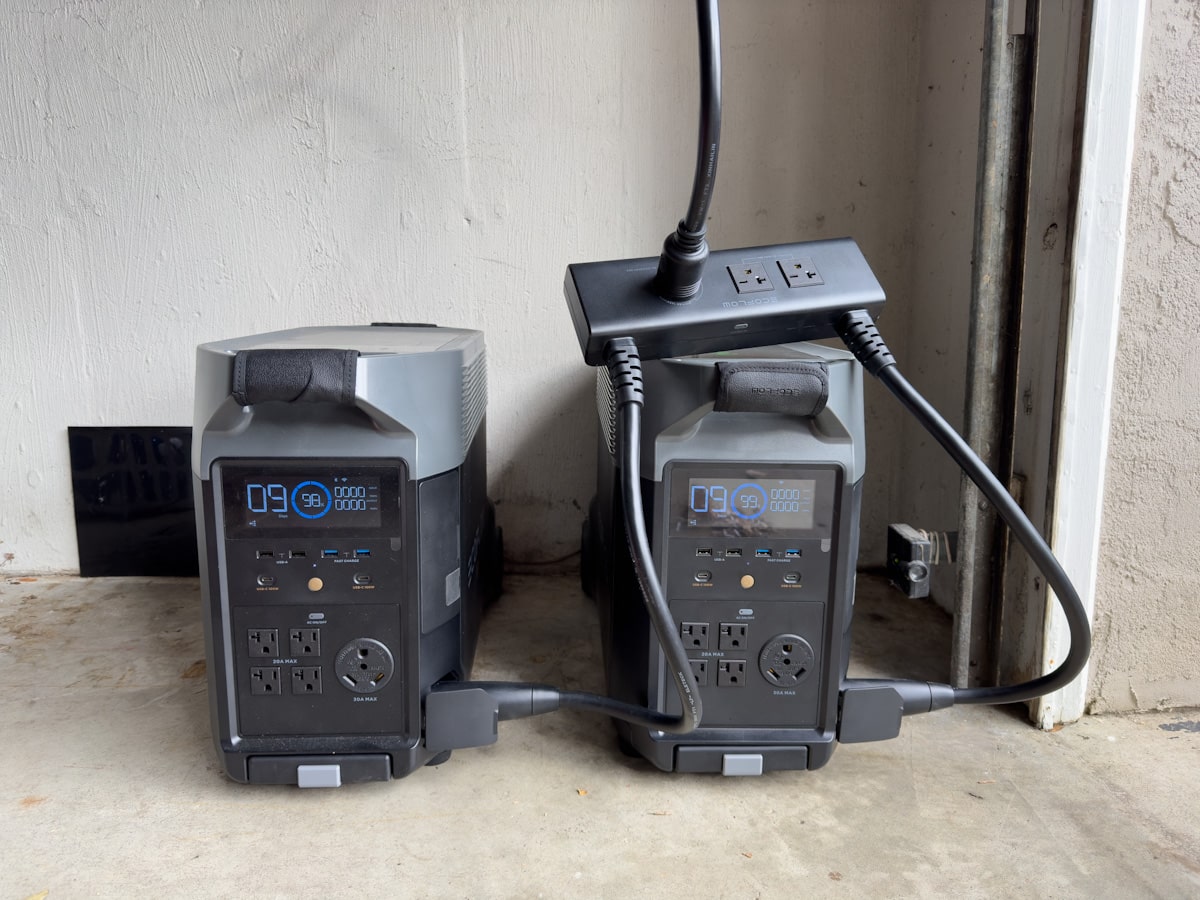
Transfer Switch Background
An electrical transfer switch is a hardwired electrical panel that enables users to switch between power from the electrical grid and auxiliary power from a local power device such as a generator. These are universal systems that have been on the market for decades, with a group of switches to failover circuits between line power or generator power.
The transfer switch also commonly includes individual circuit breakers for over-current protection as well as amp-meters to monitor usage and balance loads. Many of these use an industry-standard L14-30R receptacle which facilitates a 30A 240V connection to a generator, with a ground, neutral and two 120V hot legs. The universal L14-30R connection is what EcoFlow has designed their solution to tap into, allowing a pair of their Delta Pro units to take the spot of a gas generator.
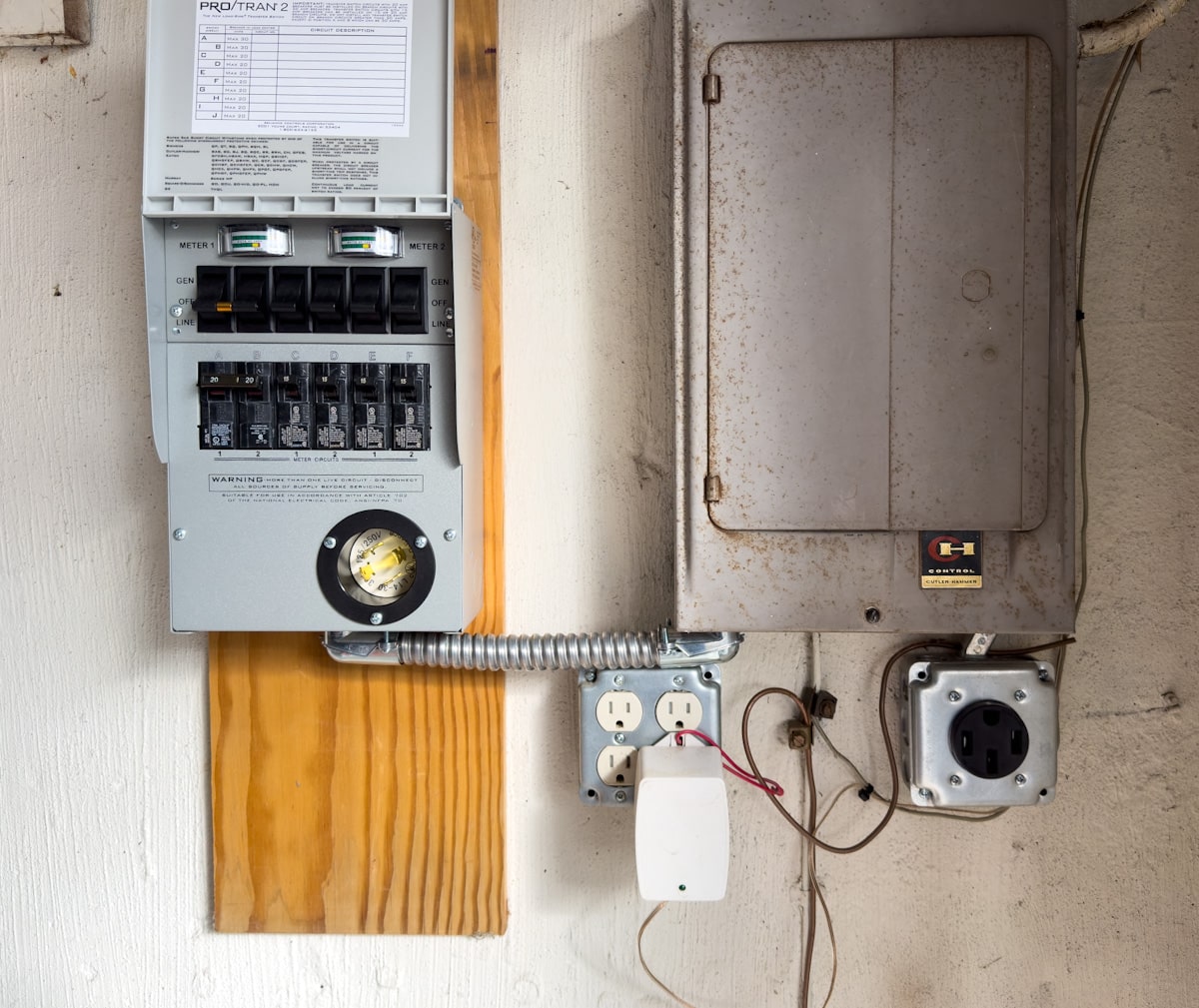
In the case of an electrical transfer switch, the two power sources are usually the main utility power and a backup generator. In normal circumstances, the main power is the primary source of power for the building or facility. However, in the event of a power outage, a manual transfer switch can be switched to the backup generator, thereby ensuring that the power supply is maintained for the circuits it’s designed to power. In many cases, a transfer switch is designed to power high-priority circuits such as furnaces, refrigerators/freezers, home lighting, and some home power outlets. Many of these solutions with the exception of whole-house generators skip devices like electric ovens or air-conditioners that draw a tremendous amount of power.
Another important feature of electrical transfer switches is the ability to prevent power backfeeding into the power grid. Backfeeding occurs when power from the backup generator is allowed to flow back into the utility lines, potentially causing injury or death to utility workers who are working to restore power. Electrical transfer switches prevent this from happening by isolating the generator from the utility lines, ensuring that the power from the generator is used only within the building.
EcoFlow Delta Pro Background
The Delta Pro is the top-end portable power station offered by EcoFlow, equipped with a 3,600W power inverter as well as a 3.6kWh battery. It is backed by a LiFePO4 battery, which gives it a long lifespan across thousands of power cycles. What makes the Delta Pro unique is its “Infinity” port, which allows two-way power flow and hardwiring the system into unique configurations such as the Whole Home Backup Power Solution.
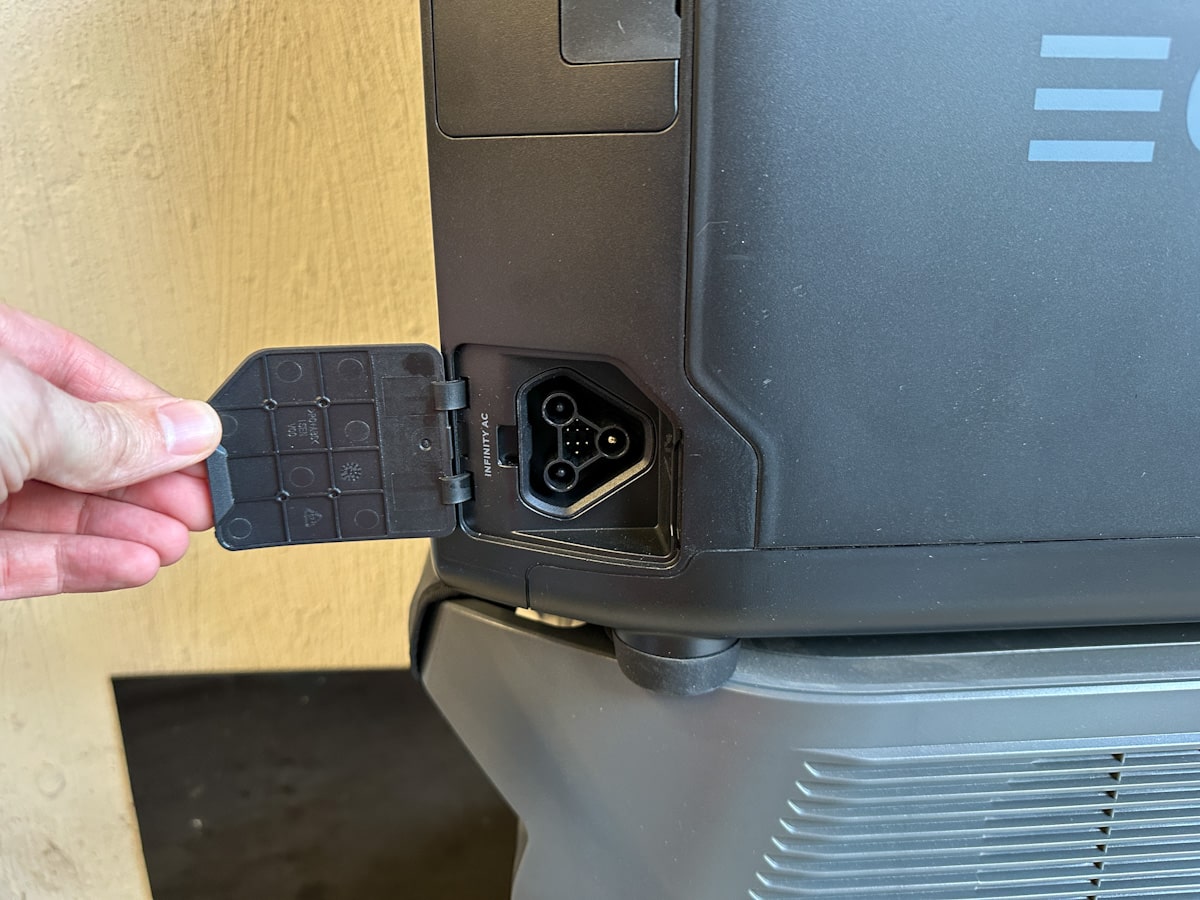
The Infinity port is leveraged in this kit to connect two EcoFlow Delta Pro units together with a Double-Voltage Hub, doubling the output voltage of the solution to 240V as well as the power output to 7,200W. The hub includes two 20A 240V plugs as well as a twist-lock L14-30R connection for high-current installations.
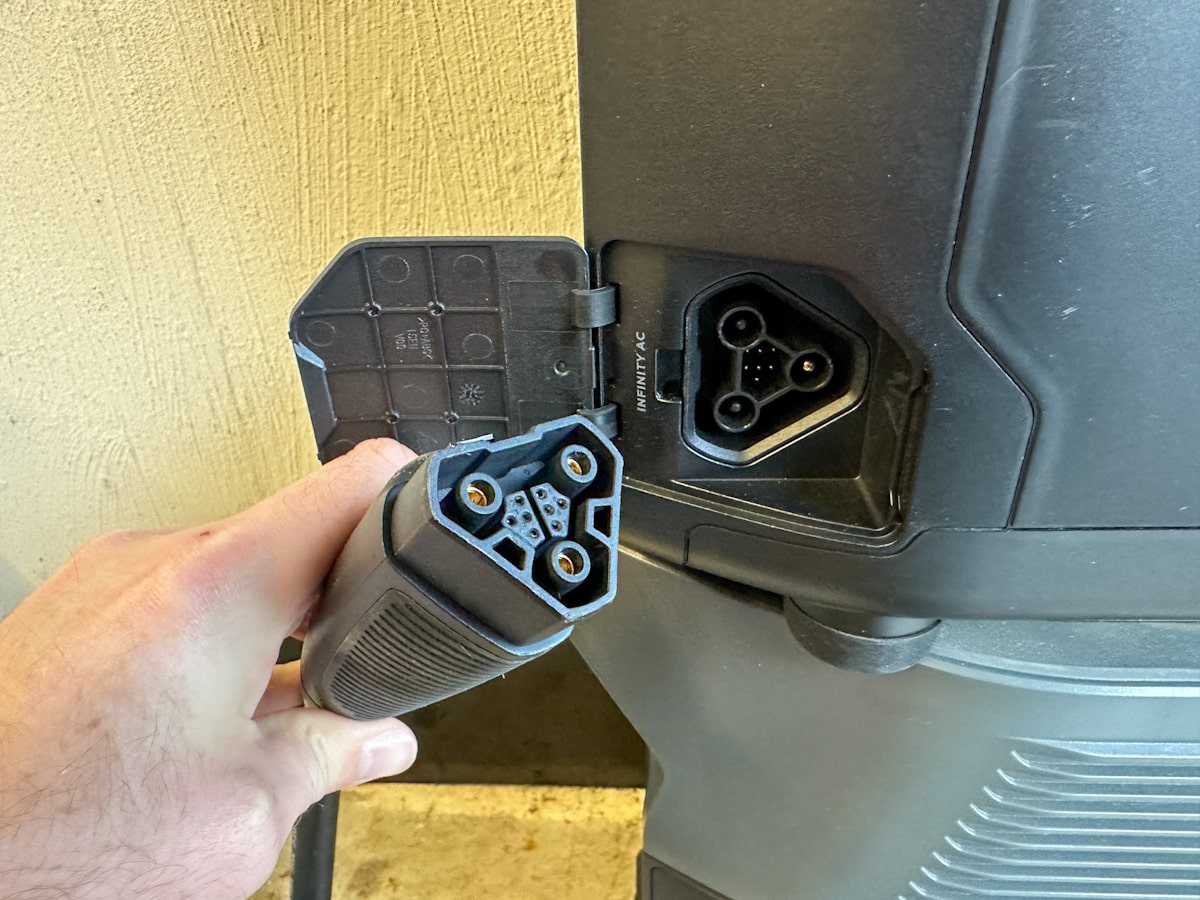
The EcoFlow Whole-Home Power Backup kit starts at $3,699, which is a single DELTA Pro unit. The configuration being tested in this review is the Advanced kit, which includes two DELTA Pro units, a double-voltage hub, and an L14-30 extension cord which retails for $6,999. A Smart Control Kit, which includes a smart panel to be installed in place of a transfer switch starts at $7,999 with two DELTA Pro units and a smart panel.
EcoFlow Delta Pro Quick Specifications
| Capacity |
|
| Output |
|
| Input |
|
| Battery |
|
EcoFlow Whole Home Power Backup
To say EcoFlow knocked it out of the park with their Whole Home Power Backup kit is putting it mildly. The entire solution is easy to assemble, needing only four physical connections. This includes connecting two EcoFlow Delta Pros together with the Double-Voltage Hub, and then the L14-30 extension cord between the hub and your home’s transfer switch.
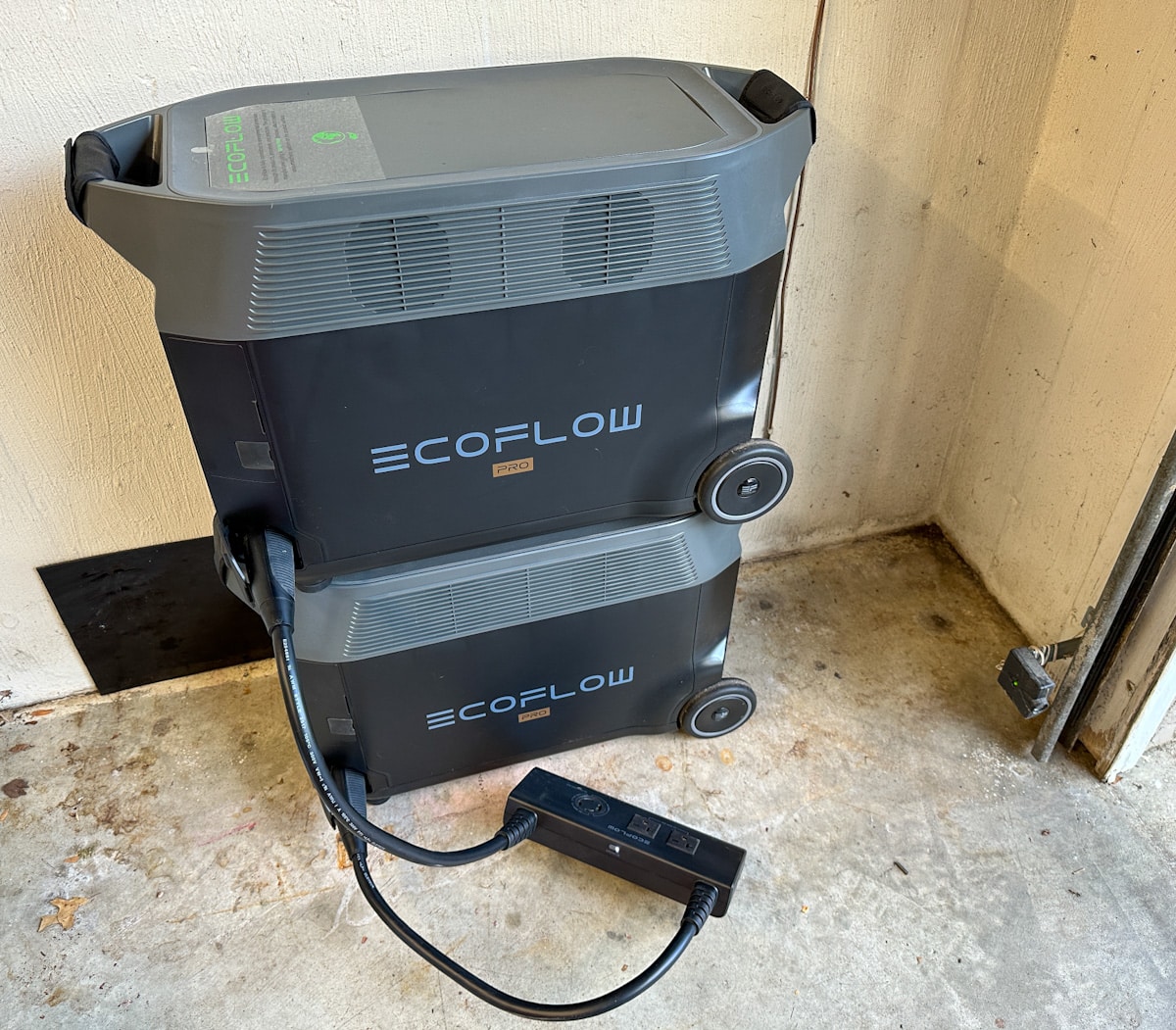
At that point you flip your transfer switch circuits from line to generator, switch on the EcoFlow Delta Pro units and press the power button on the hub. This switches on both Delta Pro units together through an internally-linked interface and supplies your transfer switch with power. All of this requires less than 30 seconds and could be turned on by a kid.
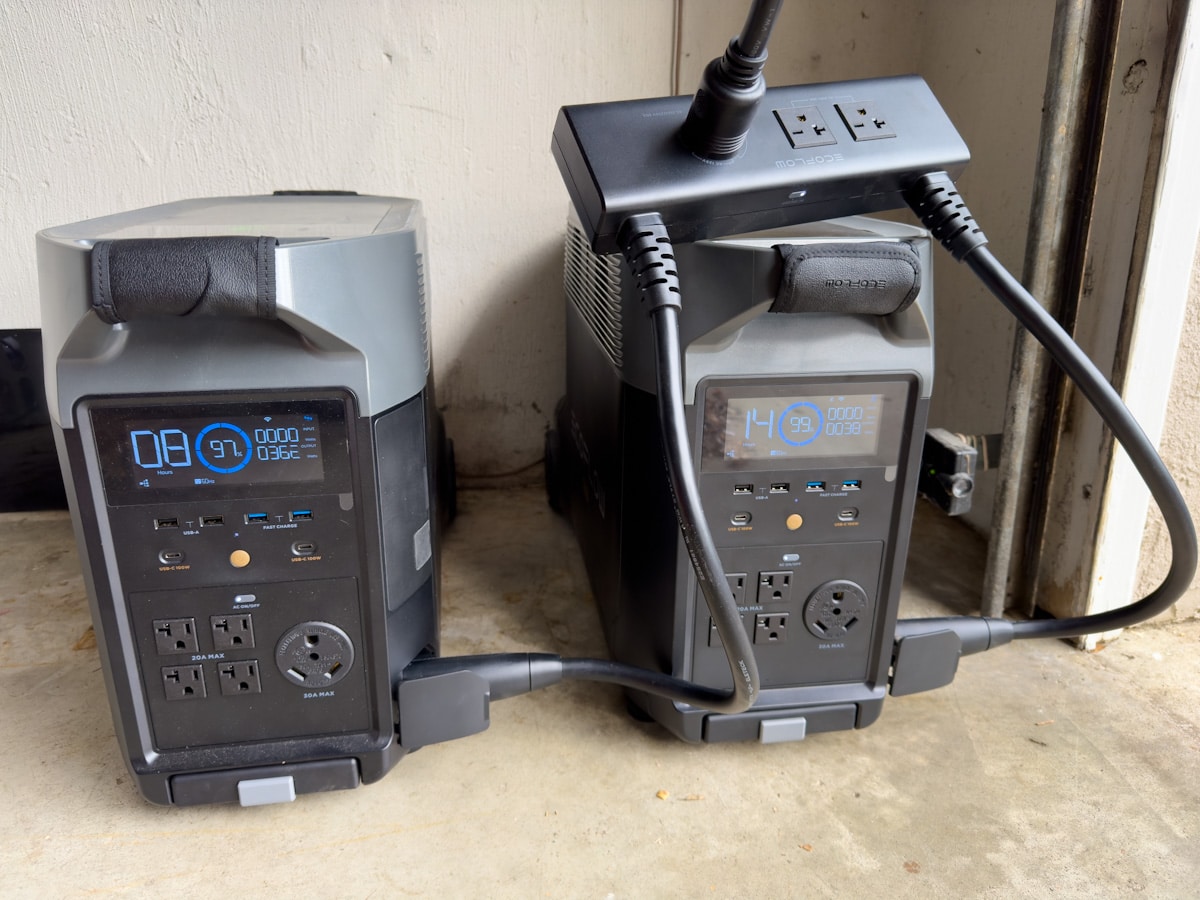
The traditional method with a gasoline generator would require hauling the assembly outside, clear from the building to allow for airflow to prevent carbon monoxide poisoning. You then need to add fuel into the generator, hand crank (or battery start the generator) and once it is running with a stable idle connect it to the transfer switch. You are then in a similar position to running things off a battery-powered system, except with way more noise.
This also ignores the maintenance required to keep up the generator so it works when you need it to work. Monthly or yearly checks are also needed, keeping the fuel stabilized, changing the oil… which isn’t an impossible task but is frequently forgotten over the years. Simply put many gas generators sit for so long for emergency outages that when the time comes to fire it up, it may take an excessive amount of effort to start or not run at all.
In terms of how the EcoFlow Whole Home Backup Power Solution performs in a real-world deployment, we went hands-on with the starter kit leveraging two Delta Pro units. The system can scale larger with up to four expansion batteries or a smart panel, although our focus is on starting package.
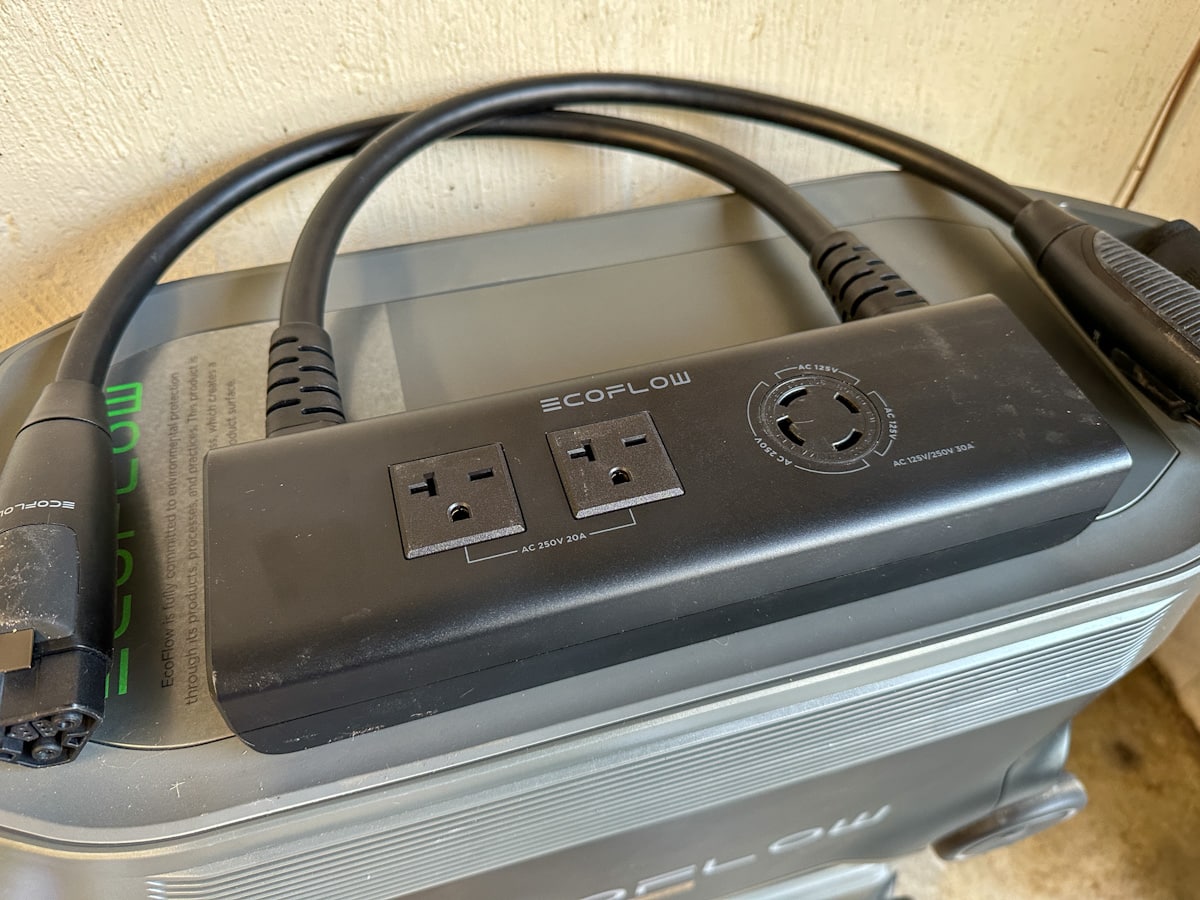
2 x EcoFlow Delta Pro + Double Voltage Hub Capabilities
- 7,200W (2 x 3,600W per Delta Pro)
- 7,200Wh (2 x 3,600Wh per Delta Pro) LiPoFE4 Battery Capacity, expandable to 21.6kWh
- 2 x 20A 240V Outlets
- 1 x 30A 120/240V Outlet
Similar to testing the EcoFlow DELTA as a standalone system, there are a lot of variables that affect how each deployment will operate. When the house was switched off from line power and prepped to switch over to generator power, most of the house lighting, TVs and other items were still set to stay on.
When the system was activated, we saw one DELTA Pro come on with a consistent 400-500 watt load, while the other saw a spike upwards of 1,800 watts. The circuits with the refrigerators and freezers were on that DELTA Pro. After a few minutes, the power leveled off to 337 watts and 203 watts, which worked out to an estimated 8.5 hours and 13.2 hours of runtime respectively. A gas furnace will make up a few hundred additional watts when it cycles on as well.
One limitation of this solution that you need to account for is the double-voltage hub doesn’t balance the load between each DELTA Pro unit. You draw 120V from one and 120V from the other, putting individual 120V loads on the unit it pulls from.
For a 240V load, that is balanced across both DELTA Pro models, but normal circuits won’t be. Balancing circuits is something you need to do for gas generators as well, but it’s important to note in this situation since larger differences will deplete one battery far sooner than the other.
Whole Home Power Backup in the Work-From-Home Era
In the past, home power backup solutions were more about keeping necessities like heat, lighting, and refrigerators online during outages. This may have been during a simpler time, but now things have skewed to include new priorities. The WFH movement has added a new necessity to keeping your home office online during a power outage to keep your livelihood operational. These devices can include routers, wireless access points, computers, monitors, and other home-office gear.
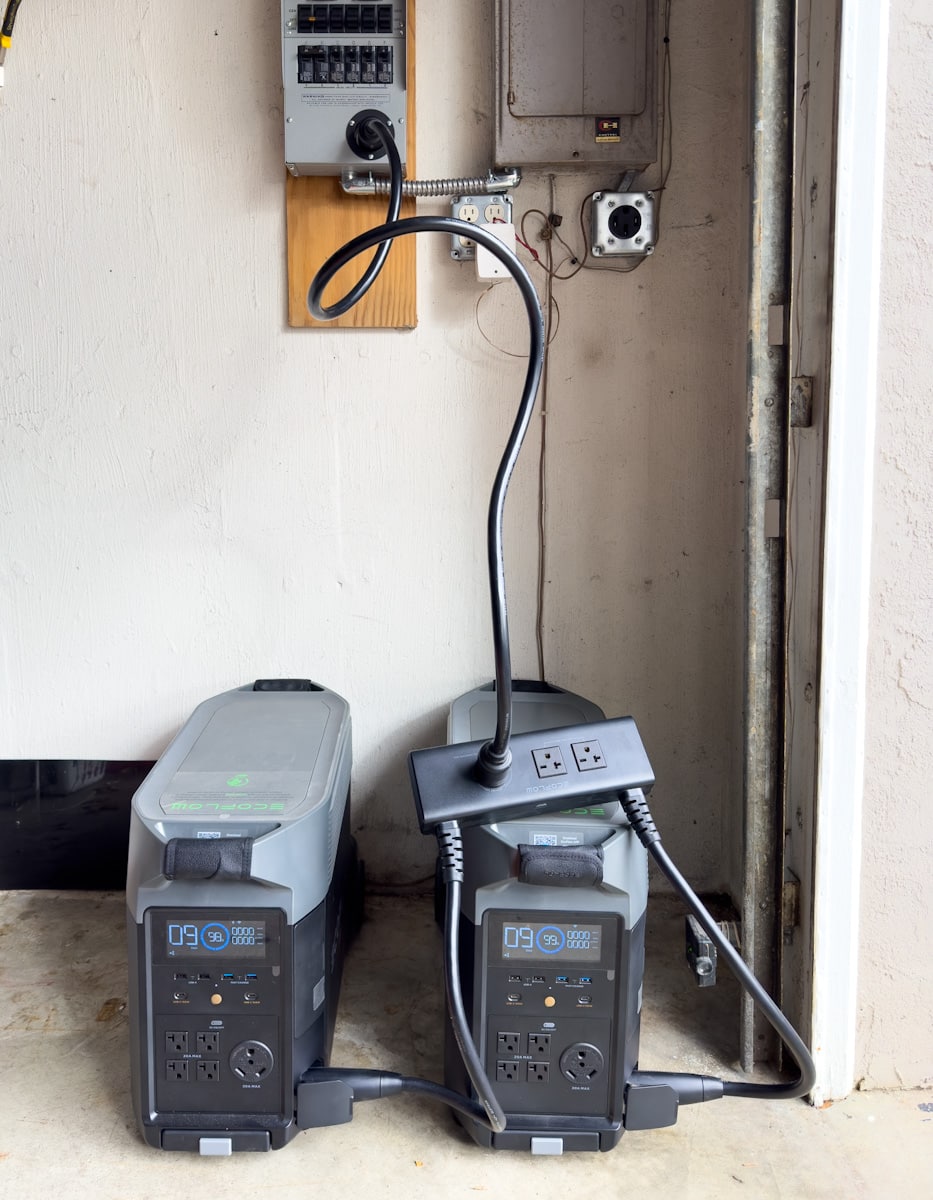
While these aren’t entirely high-draw devices, they do need to stay online for as long as possible to keep you productive. This is different from an office dropping power, where co-workers are in a similar position with downtime. When you are WFH, if your co-workers are in other regions, you don’t want to be the only person offline from local outages. The EcoFlow Whole-Home Backup Power Solution helps ensure a reliable WFH experience no matter where you choose to live. With internet solutions like Starlink, this could mean anywhere from the suburbs to a cabin deep in the woods.
Field Deployed Datacenter
When pushing the boundaries with research out in the field, sometimes portable power solutions are the only option. The EcoFlow Double-Voltage Hub enables some very interesting use cases by supplying 240V power, offering up to 7,200W of power draw and plenty of battery capacity.

While the 30A plug was leveraged for whole-home power backup, in the data center a 30A twist-lock connection is what is commonly used to supply rack-level power to a PDU. With an L14-30 to L6-30 adapter, we were able to easily move some of our lab power gear into a truck for a field-deployed use case.
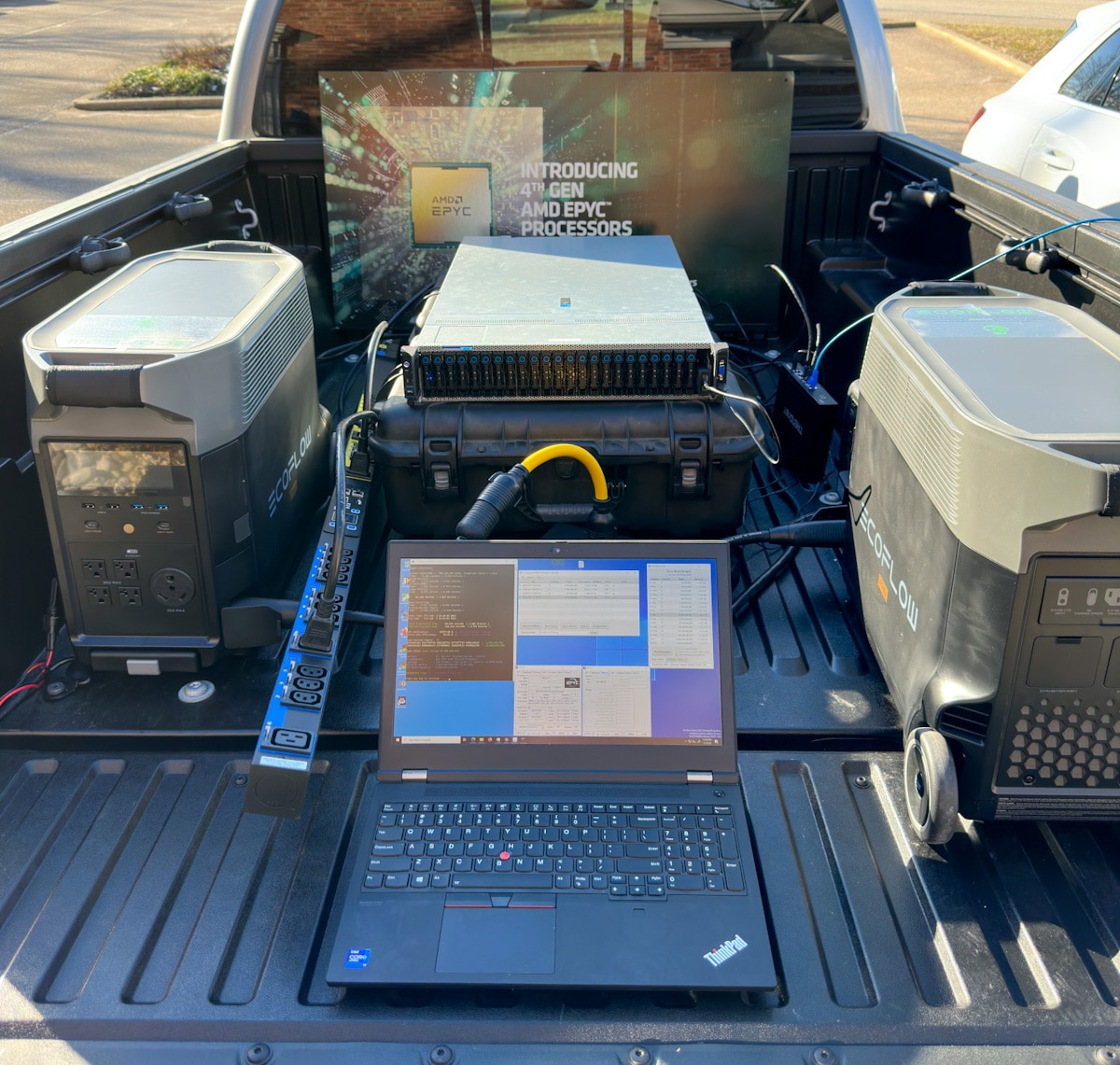
In the truck, we leveraged both EcoFlow Delta Pro portable power stations, which gave us about 7 hours of combined runtime. The server we were leveraging was a top-of-class AMD EPYC Gen4 platform, outfitted with dual 96-core CPUs, 1.5TB of DDR5, and loaded with NVMe storage. While our previous field-deployed scenarios worked with lower-power devices, this unique setup proved the ability to run top-of-the-line equipment in the field with modest runtimes.
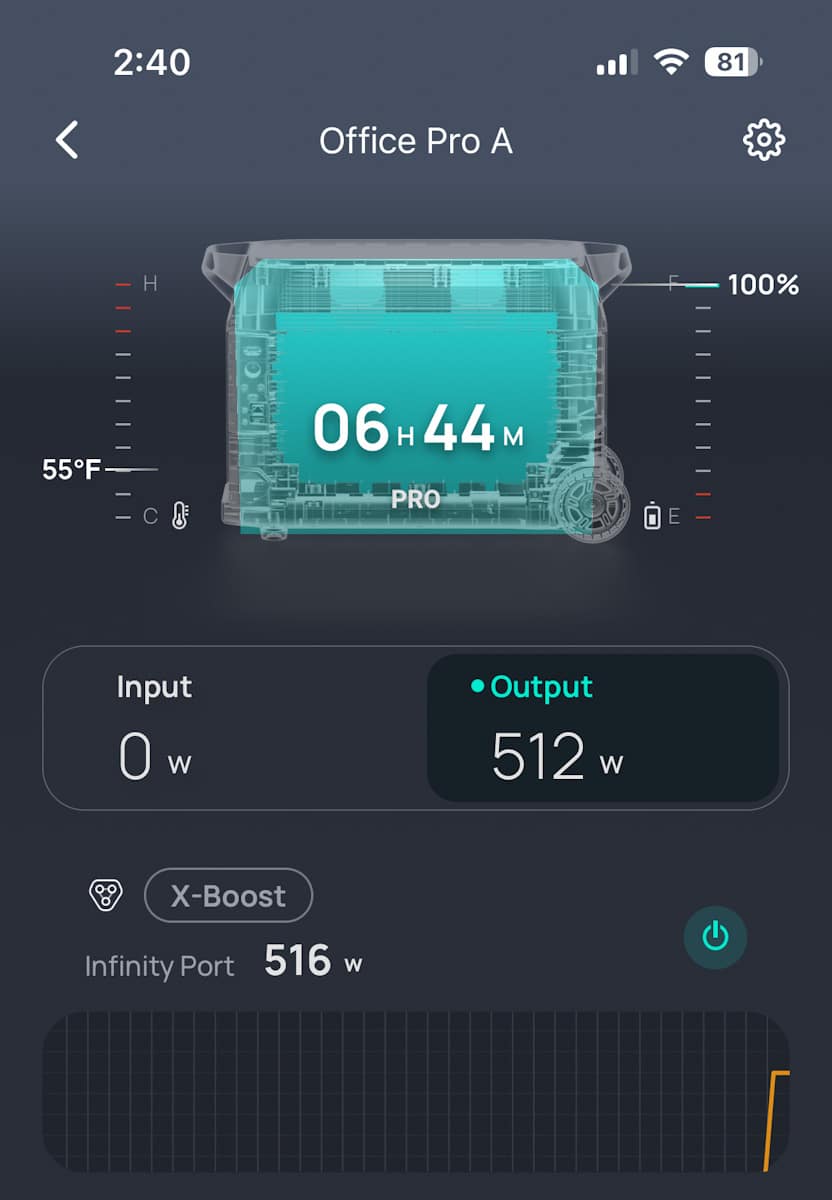
The total power capability of the system really comes down to the higher 240V voltage supported using the hub. Not all servers support 120V input, which is especially true when you start working with 1600-2000W PSUs which are commonly found on HPC servers. They are designed to operate with not only power-hungry CPUs, but are outfitted with GPUs as well. This EcoFlow solution enables a number of scenarios that would have been impossible without a significant gas generator in the field.
Conclusion
We are continuously impressed with the products that EcoFlow is positioning on the market. The Whole-House Backup Power Solution builds on the large 3.6kW DELTA Pro portable power station and incorporates it into an easy-to-deploy kit for power outages. Being designed to work in place of a gas generator, through existing transfer switches, it can quickly be deployed with really no setup required. With four power connections, users can be online with minimal hassle. It offers quite a few advantages over a gas generator including no noise, no risk of CO poisoning, and no ongoing maintenance beyond keeping the batteries charged.
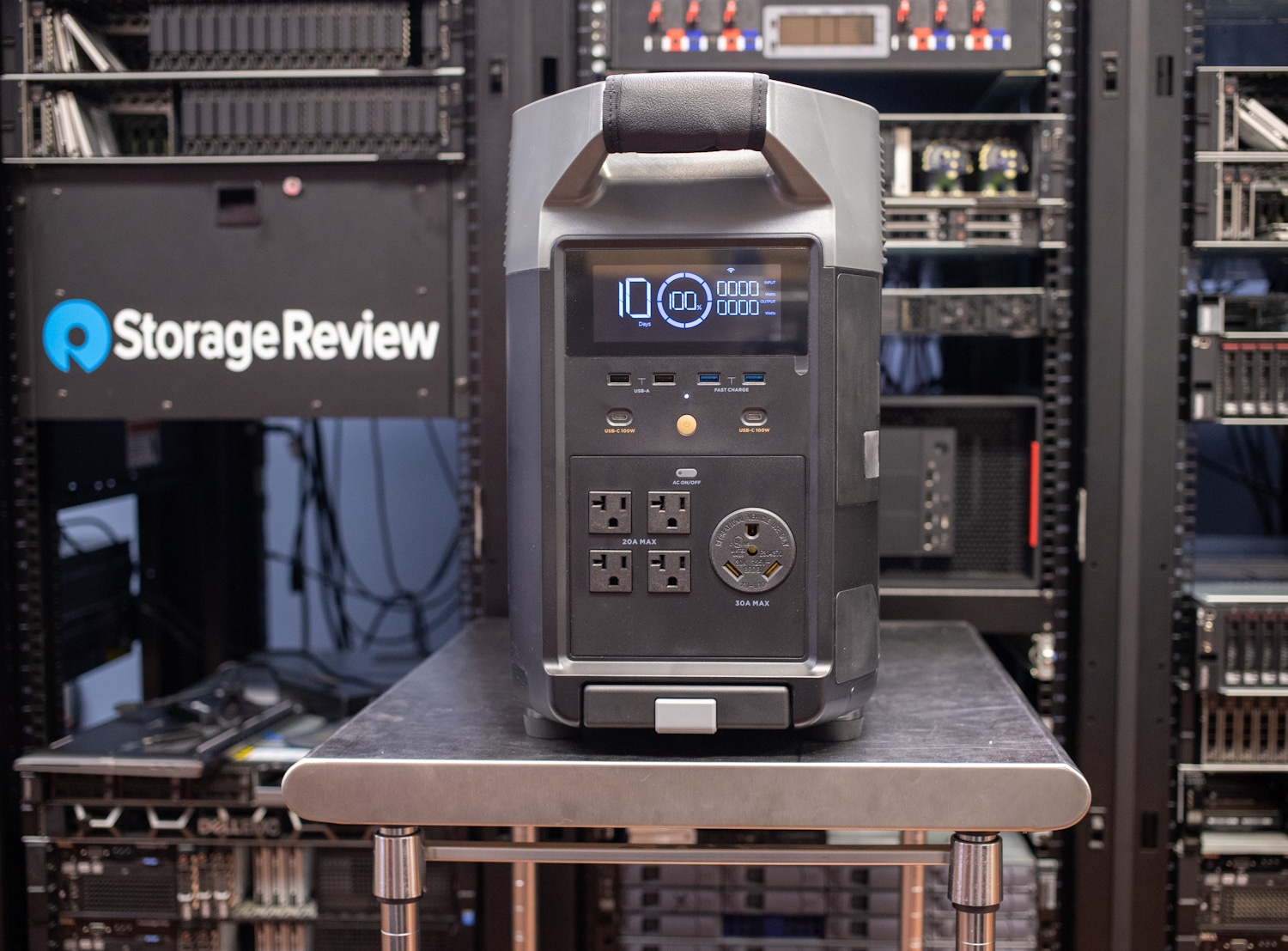
With the starter system able to handle 7.2kW of output with a 7.2kWh battery, it can easily power a home office or small business during a power outage. The kit can also scale, with the EcoFlow solution supporting up to an additional four battery expansion packs for a combined power capacity of 21.6kWh.
In practice, we found it very easy to use, with it solving the traditional emergency outage situation, while also having plenty of potential for IT deployments in the field. Having a 240V power source anywhere opens up a number of remote use cases, with 7.2kW of power being able to support even the most robust enterprise hardware.




 Amazon
Amazon